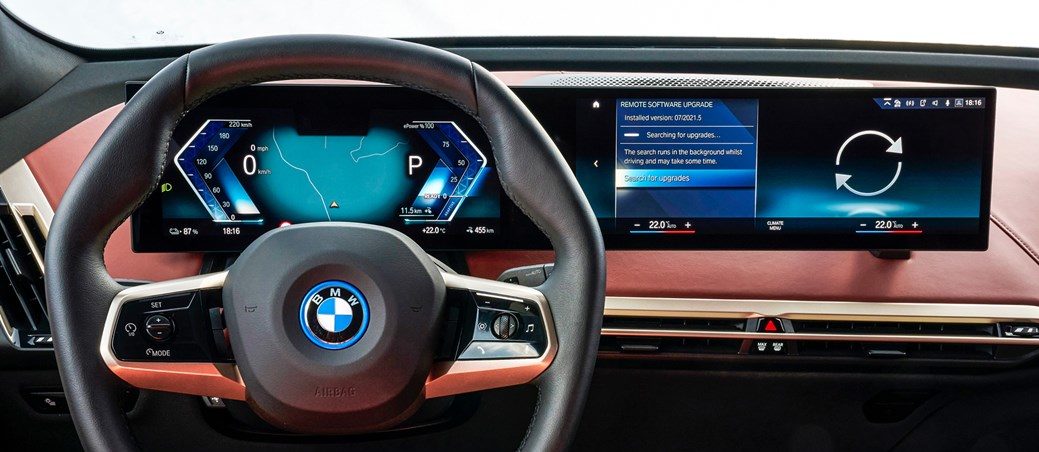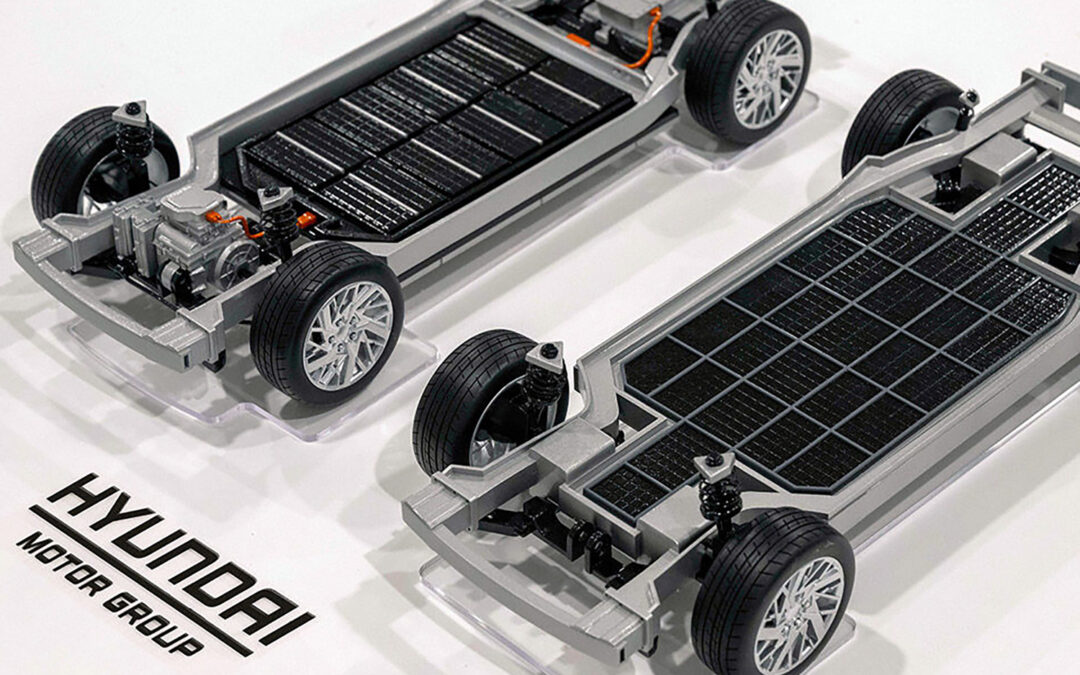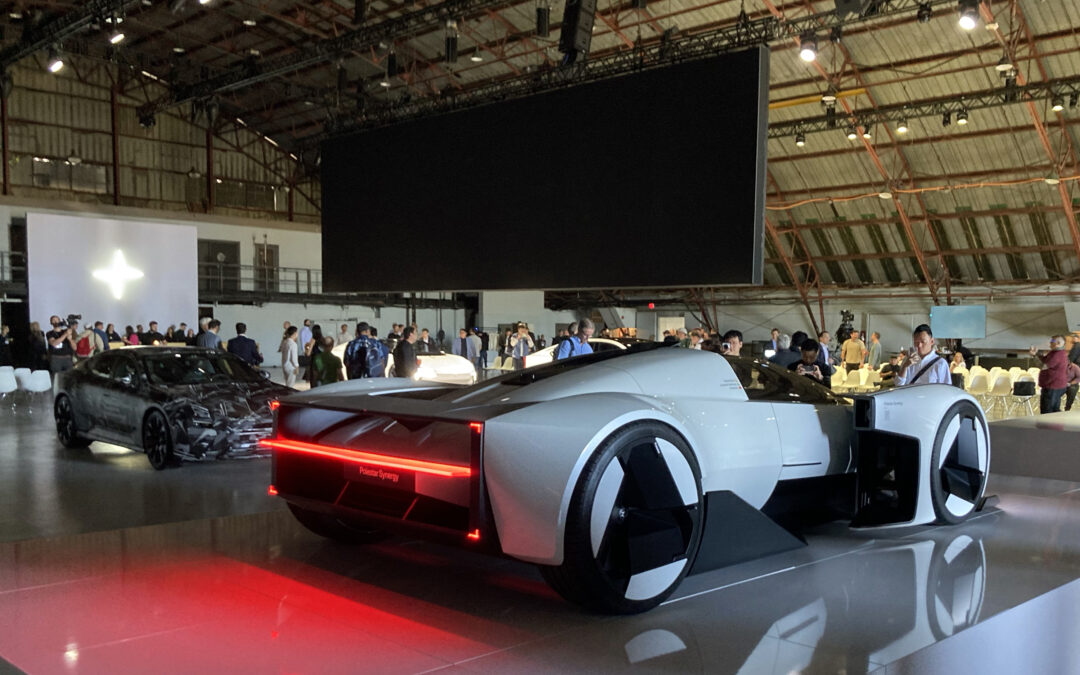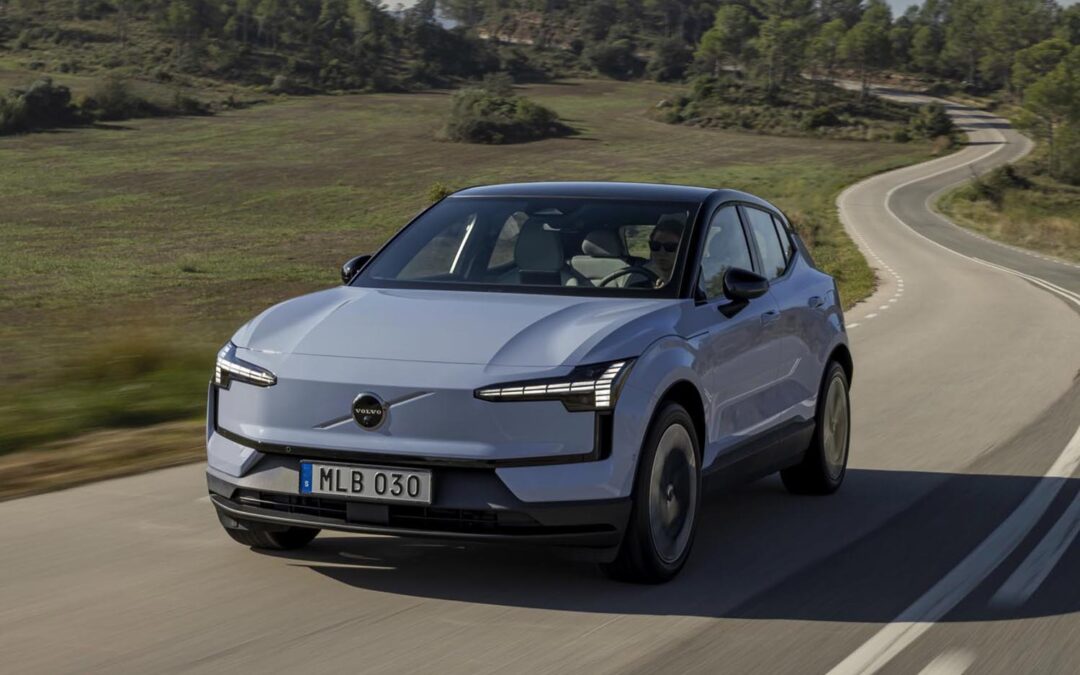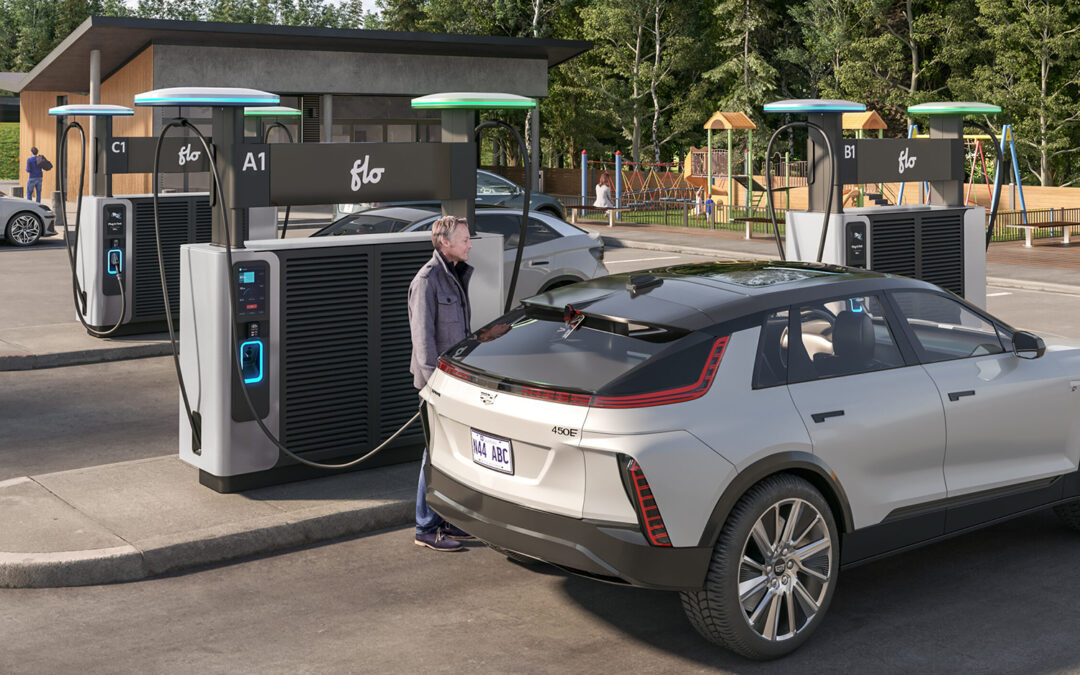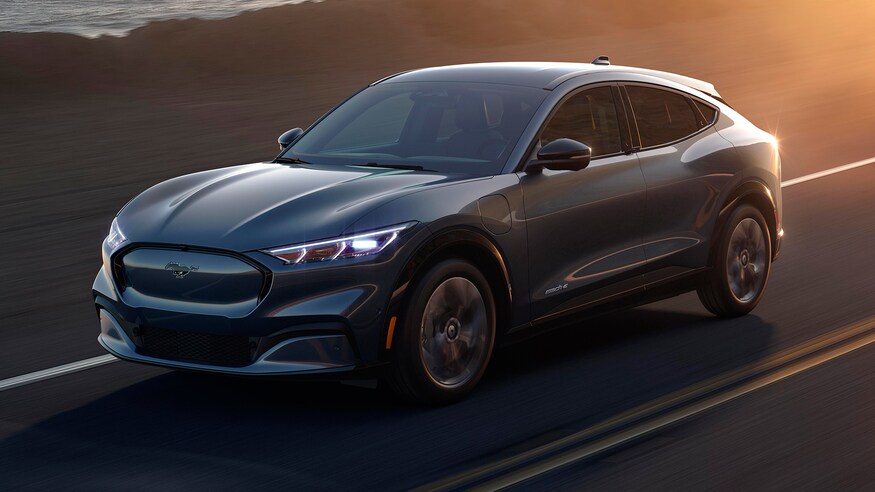Not so long ago, the Connected Car became the new norm. Along with the safety, convenience, and entertainment features it provided through advanced software, it allowed the car to connect to the internet and smartphone apps. These apps brought everything from Apple CarPlay and Android Auto to the ability for the owner to start or pre-warm the vehicle and control the charge rate wirelessly through a smartphone.
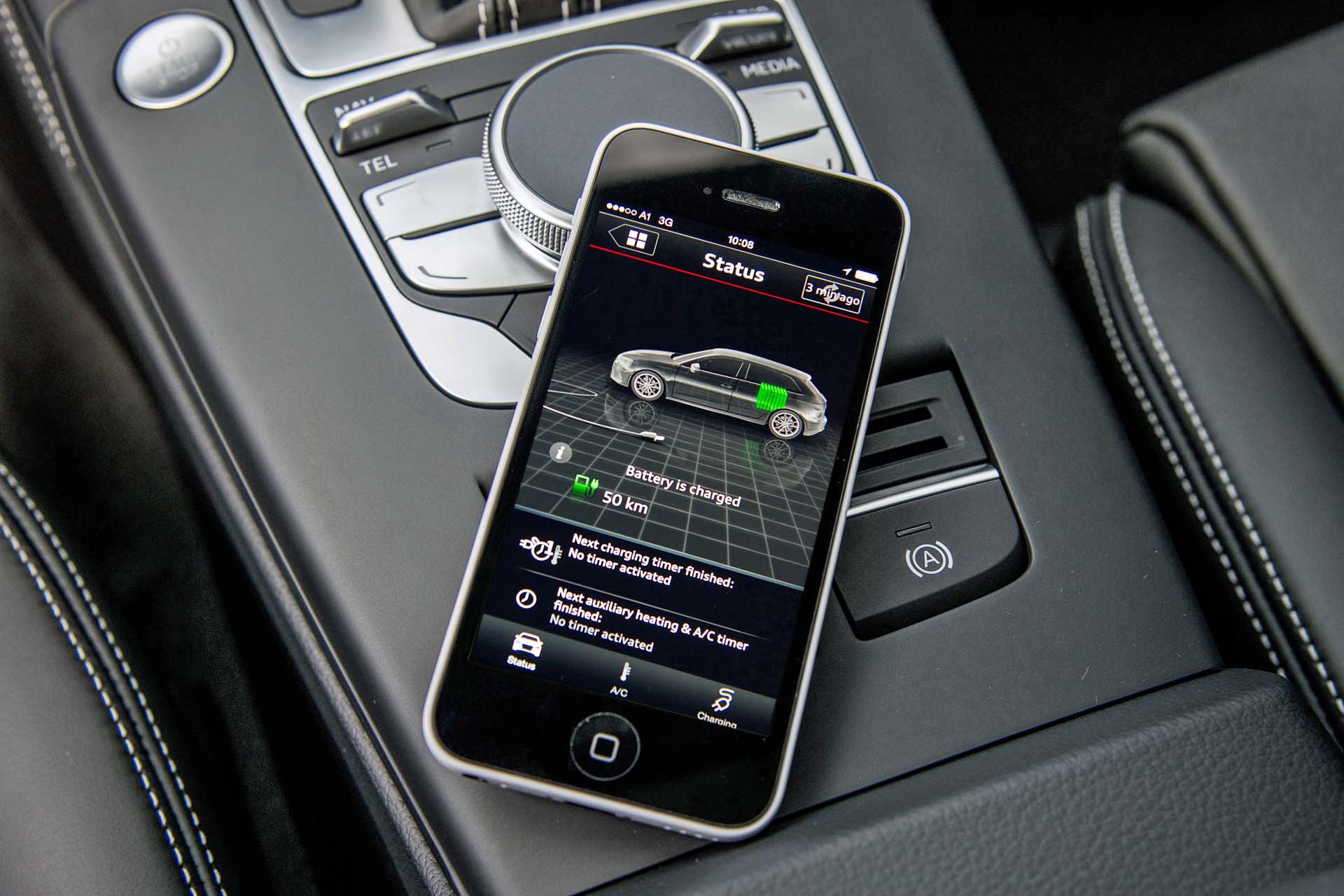
Audi e-tron connect services app for smartphones
The evolution and next step is found in the Software-Defined Vehicle (SDV). The transformation will take the car from a hardware-centric product to a software-based unit. In the process, it touches everything from connectivity and personalization to the full-on autonomous drive that’s sitting on the horizon.
In the past, many vehicles remained unchanged from the day they were made until the day they were retired. At the time, every vehicle had multiple electronic control modules, each of which looked after a specific piece of hardware using its own software package. It was such software upgrades for the infotainment, navigation or vehicle systems that required a trip to the dealership. The Software-Defined Vehicle will get all of its updates over-the-air (OTA). This not only keeps the car current, it gives the manufacturer the ability to monitor the performance of the vehicle remotely.
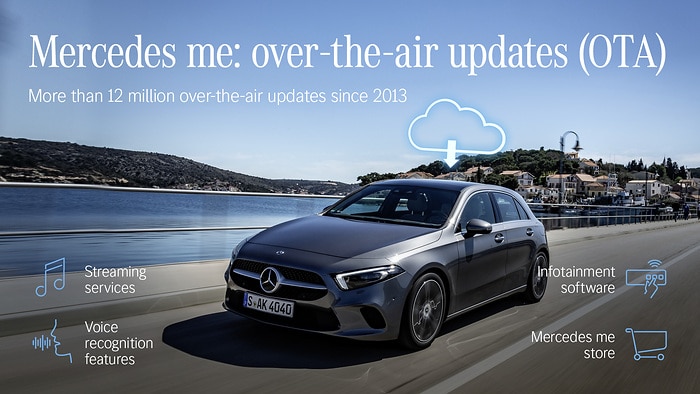
Mercedes OTA
Moving forward, the ability to update everyday hardware with new functionality and features without forcing the customer to invest in the next “new” model will play an increasingly bigger role. In many respects, the shift to the Software-Defined Vehicle will mirror the smartphone industry — the software and hardware sides of the vehicle will be developed separately, which does away with many of the current constrains. This simple change also means that, in future, several generations of hardware can be upgraded with new/updated operating systems over course of its life in the same way Apple looks after several generations of iPhone. The beauty is everything is done over-the-air and on the go.
This ability allows the manufacturer to give tech-savvy consumers software-based solutions to everything from advanced driver assistance systems, new infotainment features and a rich user experience through to improved connectivity and more vehicle personalization.
Likewise, as more vehicles become part of the internet of things (IoT), the need to send and receive enormous amounts of data from this cloud-based environment requires fast, reliable and stable software and it must have the capacity to process, manage and distribute all of the information securely. The security side is a thorny issue with a shared responsibility — the manufacturer must lock-out interlopers and the owner must protect passwords if it is to succeed.
Read more: New software gives Polestar more power than rival Tesla
The shift to Software-Defined Vehicles will also change the traditional business model. Typically, automakers introduced a new model with updated features every five to seven years. Moving forward, consumers will be able to access and update many of the new features though software upgrades. More importantly, access to these on-demand features and services allows the manufacturer to turn the car into a revenue generator that goes well beyond the profit built into the original selling price.
Hyundai recently announced that all of its cars will be Software-Defined by 2025. In the press release, the key thrust was pretty obvious, “Constantly upgradeable software will provide diverse, stable revenue streams while offering fresh functionality and features to keep customers’ vehicles up to date.” The key phrase here is “stable revenue streams.”
Read more: ‘Software Age’ is Hyundai’s future for OTA updates
Over-the-air updates will allow manufacturers to turn many of the functions that are currently a one-time buy at the time of purchase into subscription-based features that can be turned on or off over-the-air. Now, rather than getting paid once, these subscription-based options allow the manufacturer to bolster the bottom line for years to come.
The list of subscription-based services already touches infotainment services like satellite radio, but it will likely grow to include everything from heated seats, wireless charging and remote-start to safety features like lane-keep assist, adaptive cruise control and auto high beams. In the electric era, it could also allow the manufacturer to open up more of the battery’s capacity with an over-the-air upgrade, which would increase range. It could just as easily be used to send a signal to increase the electric motor’s output. The possibilities and revenue generated seems endless.
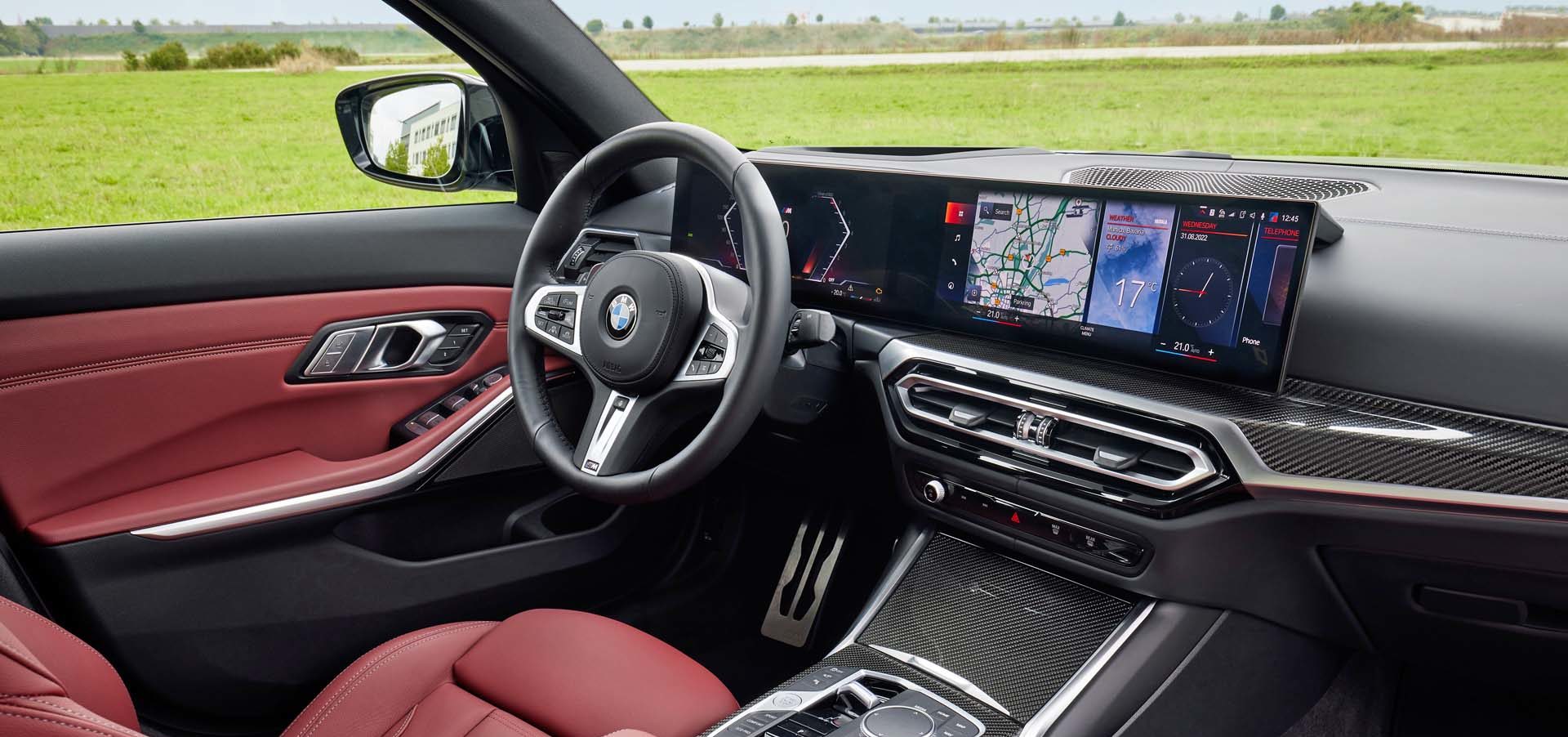
BMW interior
What has not been clearly explained is how these subscription-based features would work. If it mirrors the cellphone model it could get expensive. For example, if heated seats, for the sake of argument, cost $20 a month and give the owner the ability to cancel the warming option during the summer months, will there be a reconnection fee? The furor over this very issue was witnessed in July of this year when BMW ran headlong into a maelstrom over its subscription policy in some parts of the world. The company charges British motorists $23 per month for heated seats, $15/month for a heated steering wheel or auto high beams and $54/month for adaptive cruise with lane keep assist. In fairness, there are annual subscription options and a one-time purchase plan available on BMW’s ConnectedDrive Store if the feature is not standard.
It is not difficult to understand the reason for the shift towards a subscription-based market. For the driver, it promises to keep vehicles up to date, safer and offer a more diverse array of features and functions. For the manufacturer, it opens up an entirely new revenue stream. It is not hard to see the day when manufacturers will make more profit from software subscriptions over the life of the vehicle than the profit in the initial of the sale of the vehicle itself. General Motors has said it expects its in-car subscriptions to net nearly US$2 billion this year and projects it to hit US$25 billion by 2030. Likewise, Stellantis pegs it at US$22.2-billion in 2030.
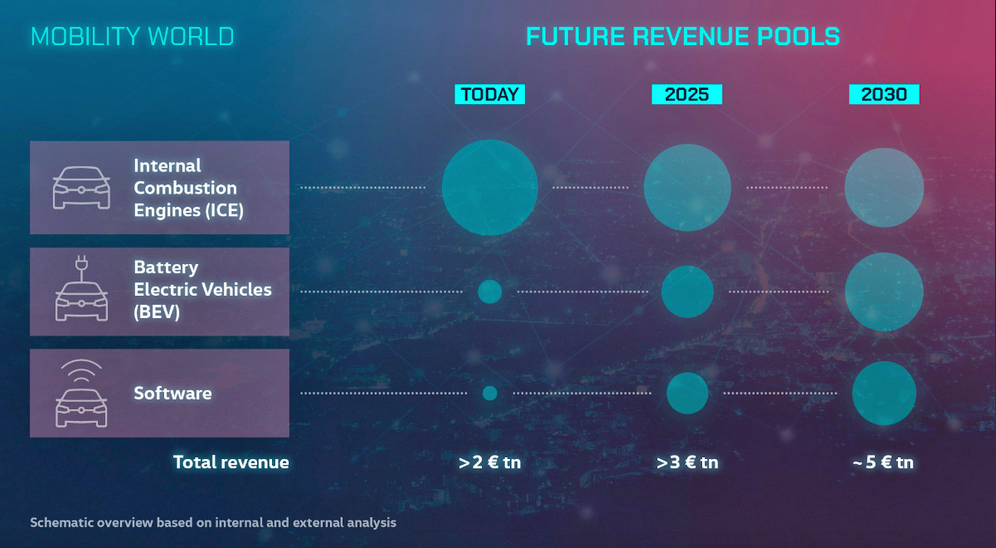
Volkswagen predicted market for 2030
The Volkswagen Group is the most optimistic, as illustrated in the graphic above. The company predicts, “At an estimated €1.2 trillion ($1.62 trillion), by 2030, software enabled sales could add around one third on top of the expected BEV and ICE sales, more than doubling the overall mobility market from around €2 trillion ($2.69 trillion) today to a projected €5 trillion ($6.72 trillion).” Of course, these bold predictions assume the consumer will just sit back and swallow the bitter pay-as-you-drive pill without question!
